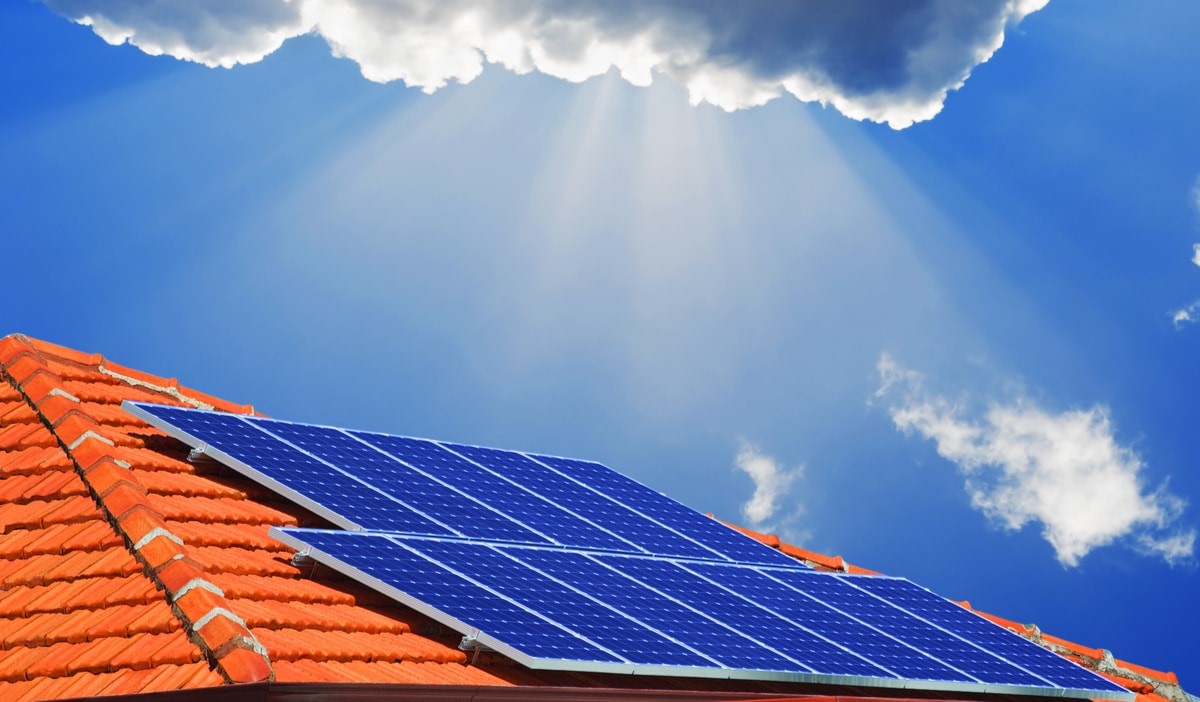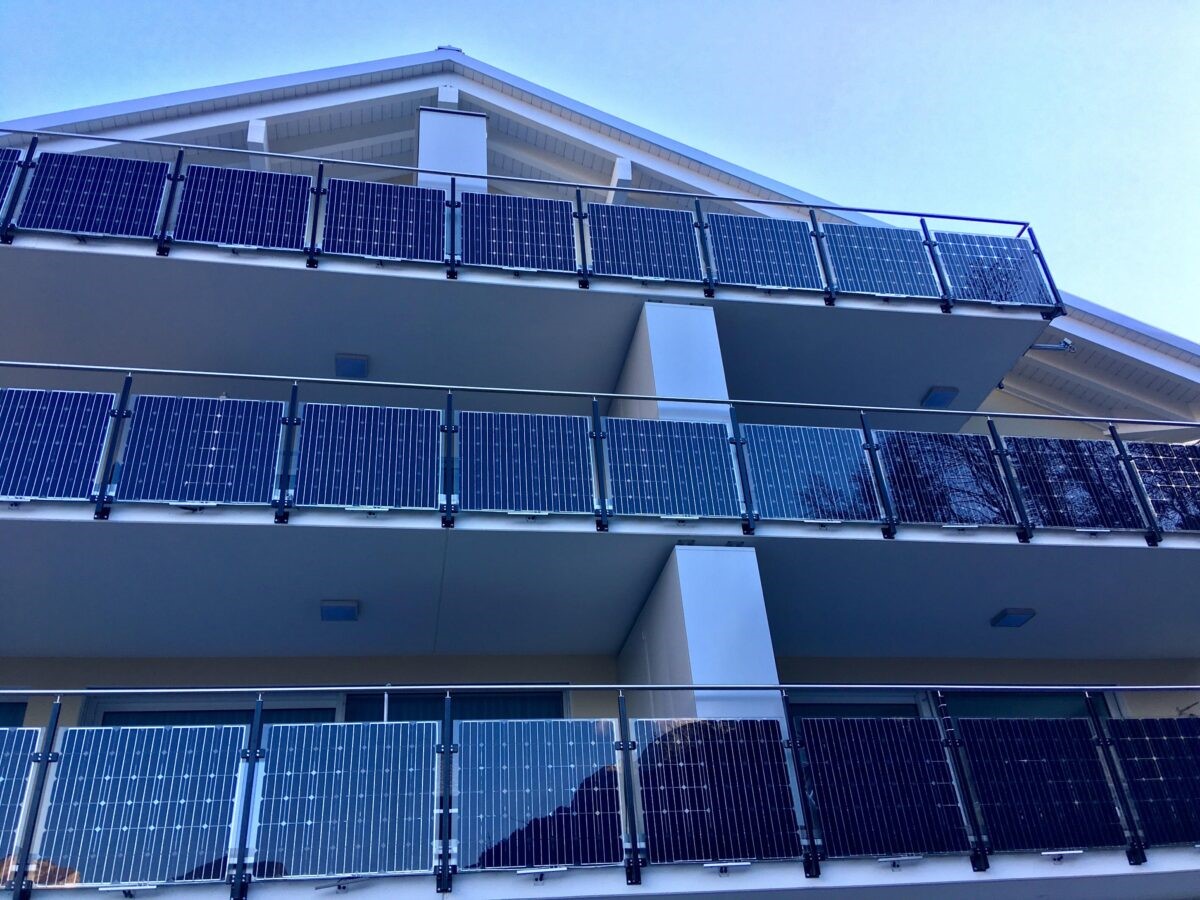
In recent years and in particular since September 2021, the price of energy has increased by up to 50%, mainly due to the increase in demand and the scarcity of natural gas (the major resource used to produce electricity in Italy). So people have understood that the future is not conventional energy, but photovoltaic energy, since it is produced by an inexhaustible source (the Sun), which has the following advantages: • It allows you to have a stable price regardless of the increase in the national electricity price • The sun is an inexhaustible resource, unlike conventional energy sources which are subject to changing demand. • Allows savings of 70% on bills.
These are the main questions we are asked by users about our domestic and industrial photovoltaic systems:
1) How does a photovoltaic system with on-site exchange work?
Photovoltaic systems that provide on-site exchange are classic photovoltaic systems, also called “on grid”. The “on-site metering” contract is stipulated with the GSE, the Energy Services Manager, according to which the energy produced in surplus is fed into the grid and is paid as a partial reimbursement on the bills.
2) Is it still convenient to install a system with on-site exchange?
Although systems with on-site exchange may seem convenient, there are many weak points, which we will list as follows:
– The system is always connected in series to the ENEL meter. Let’s explain better: the inverter, an instrument that transforms the direct voltage (DC) output from your solar panels to domestic users into 220V alternating (AC) communicates with the ENEL meter, and if it does not receive feedback from it, it does not enables the supply of energy in the home. This means that if there was a blackout, even during the day, your photovoltaic system would not work and you would be left without light.
– Surplus energy is not always sent to the grid. This problem is frequent if the meter of your photovoltaic system is more than 15 meters away from the ENEL meter. In fact, if the load losses are too high, the inverter, to compensate for these losses, can go into overload and shut down. So you think you are producing energy from your system and sending it to the grid, but in reality this is not the case. In fact, if the inverter turns off you aren’t even producing.
– The GSE pays little for the energy put into the grid. The energy fed into the grid is paid by the GSE for a price between 10 and 15€cents/kWh, through a complex calculation that depends on the PUN (National Single Price) (https://www.fotovoltaiconorditalia.it/mondo- photovoltaic/exchange-on-site-calculation-with-practical-example). However, the energy withdrawn from the grid is paid around 22€cents/kWh. It is therefore clear that surplus energy is more convenient to consume than to send it to the grid.
– The system with on-site exchange is more expensive. A photovoltaic system generally costs around €500/kWp. However, the costs include the cost of the second meter, the cost of processing the paperwork of approximately €350/Kwp. Furthermore, the connection of the system to the grid must comply with the methods and procedures defined by the Aeeg (Electricity and Gas Authority). Depending on the input power, costs vary from €100 to €2,500. – With the system with on-site metering you will continue to pay the fixed costs, which are approximately 66% of the total cost of the bill.
3) How does a ULIX Innovation system differ from a classic on-site exchange system?
Ulix Innovation’s off-grid systems, however, have the following advantages:
– They are independent of the ENEL meter.
– The surplus energy is stored in the batteries and used at night. Only if there is not enough energy from the batteries will energy be taken from the grid. Ulix Innovation can also estimate the minimum number of photovoltaic panels and storage system to be completely independent from the grid even on the least sunny day of the year. (link insolation values).
– The costs for energy transport and system charges will be significantly lower than those of on-grid systems.
4) How much does a photovoltaic system with off-grid storage cost?
Ulix Innovation systems generally cost less than on-grid ones, since the costs of installing the meter and the costs of processing bureaucratic and administrative procedures are eliminated. All that remains is the cost of panels, inverters, batteries, battery charge controller and installation costs.
The price is around €2000-2500/kWp to be discounted based on state incentives.
5) Can system burdens be eliminated?
As can be seen from the following ARERA table, the costs for transport and management of meters and system charges have a fixed and a variable component. The fixed one, unfortunately, cannot be reset (unless you decide to permanently disconnect from the network). The variable one, on the other hand, can be significantly lower, to the point of being eliminated, if you consume the energy stored in the batteries rather than taking it from the grid.
6) How can you request the 110% EcoBonus with photovoltaic?
The 110% eco bonus applies only to on-grid photovoltaic systems. Ulix Innovation plants, being off-grid, cannot benefit from this concession. However, the classic tax recovery of 50% in 10 years will always be possible and the lower installation cost will be amortized in less than 3 years only with energy savings.
7) Can photovoltaics be installed on the balcony?
Of course, using a special frame, we can easily install the panels on your balcony too.

8) How does the invoice discount work?
The discount on the invoice corresponds to the 50% IRPEF deduction for expenses incurred for the installation of a photovoltaic system up to a maximum of €96,000. the deduction is valid until 12/31/2022 for both on-grid and off-grid systems.
9) Can we break away from ENEL with photovoltaics?
Certainly! Ulix Innovation can size a customized system for you, after having carried out an inspection of your home and assessed its feasibility. In any area of Italy it is possible to satisfy energy needs without needing to draw from the grid, if you have sufficient roof and balcony space. Contact us for a quote. However, disconnecting completely can lead to the loss of the habitability of the house, therefore the POD user with E-distribution must always be maintained.
10) Can a photovoltaic system be installed in the historic center?
Unfortunately, the amendment on simplifications proposed in 2017 by Legambiente and some parliamentarians of various parties regarding the installation of photovoltaic panels in historic centers was rejected by the Ministry for Cultural Heritage and Activities, despite this bill providing that the panels were installed at the same slope as the roof pitch and were invisible from the street. Therefore, in order to have the green light for the installation of a photovoltaic system in restricted areas, you must have the favorable opinion of the Archaeological Superintendence closest to your municipality.

